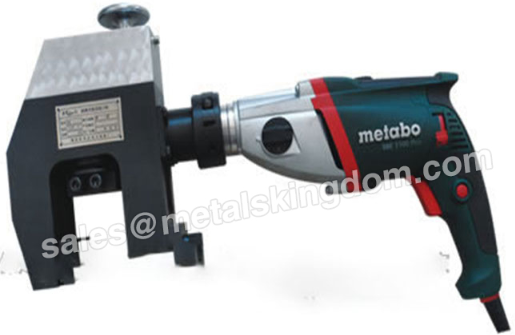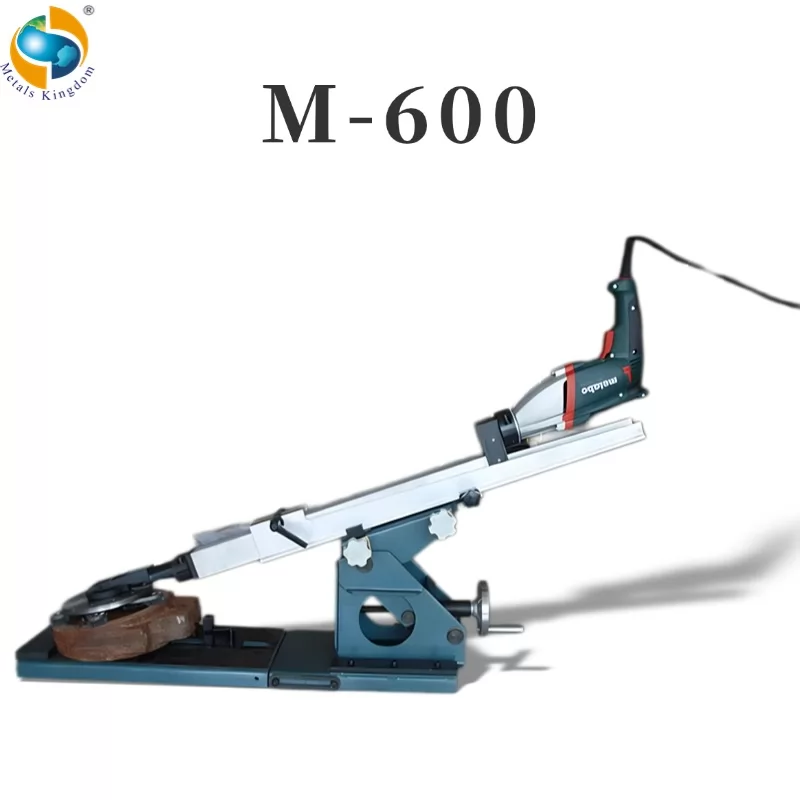At first glance, introducing a beveled edge on a pipe appears straightforward. But if high quality, low cost, and safety are your goals, then you'll need to plan and execute the work with a special attention to detail. Here's a six step process that will deliver superior results.

Pipe Beveling Machine
1. Evaluate the Job
A thorough evaluation has three parts:
ㆍThe bevel design.
ㆍIncoming material quality.
ㆍThe volume and place of beveling.
In most cases your engineering team or customer will specify a V or J bevel. Review their bevel drawings in detail. Is the design ASME compliant? If not ASME compliant, what are the tolerances for the included angle, root face and land? What grade of aluminum or steel or other metal has been used? What's the thickness? Is minimization of the HAZ (heat affected zone) an important consideration in the beveling and welding processes? These design attributes will be important in selecting the right process.
Incoming material quality is another consideration. A pipe built to tight tolerances will be easier to precisely bevel. One with uneven and/or poorly surfaced ends may require a preliminary facing operation to straighten and finish the ends.
The final part of your evaluation is volume and place. Beveling hundreds or thousands of pipe-ends as part of a manufacturing activity indicates the need for a high speed process. In contrast, low-volume beveling in the field as part of an installation or repair suggests a portable process. “Place” also encompasses safety and facility considerations. A factory or shop with enclosed spaces has a unique set of ventilation and work area limitations. Outdoor locations may have reduced access to facilities. Safety guidelines may also restrict the use of certain processes and materials.
2. Select a Pipe Beveling Process
Your job evaluation provides a checklist with which to make your selection of a beveling process:
ㆍDo the bevel's design tolerances allow for manual grinding or torch cutting?
ㆍDoes the HAZ need to be minimized to assure a high-reliability weld?
ㆍWill a preliminary facing operation be required?
ㆍWill safety and facility considerations limit the use of certain processes?
The consensus among industry professional is that bevels requiring mechanical precision should be milled using a special purpose pipe beveling machine. It's the best way to prepare the pipes for a high-reliability weld. Along with being more precise than manual grinding and torch cutting, a properly executed bevel milling process will not create a HAZ. Many beveling tools can also support pipe facing operations.
Milling using pipe bevelers has the additional benefit of delivering real bottom-line savings compared to grinding or torch cutting.
By delivering a more precise cut, they virtually eliminate scrap and re-work. They are up to ten times faster, reducing labor costs and throughput time.
They require less operator training and skill.
Safety and facility considerations also favor special purpose beveling tools. They don't produce the fine dust typical of grinding processes (a respiratory risk), nor do they use an open flame as in the case of torch cutting processes.

Portable Inner Expand Type Metal Pipe Beveling Machine
3. Select a Beveling Tool
The selection process for a pipe beveling machine revolves around volume and place:
ㆍWill work volumes be high and consistent, or low and sporadic?
ㆍWill the work location be fixed or mobile?
High work volumes argue for a stationary beveler. Smaller units enable some flexibility in shop floor location making them ideal for lean manufacturing environments. Larger models provide higher throughput and fully automatic operation.
Field work by definition requires a portable beveler. These are often manual, general beveling tools coupled with a precision fixture for pipe beveling. That adds to their value in the field.
All of these choices should be evaluated for capability (pipe diameter, wall thickness, bevel angle selection, milling speed control) as well as ease of set-up, operation and mill head replacement. For tools going into enclosed work spaces, assure that the tool meets your noise and respiratory safety rules.
4. Safety First
Before putting your beveler into operation, take steps to assure operator and facility safety:
Document all beveler operating safety practices, including applicable ventilation and required PPE.
Train operators on beveler operating and safety practices. Include instructions on running the beveler within its specified working range. Beveling machines pushed outside of normal operating parameters – for example, with excess speed or on a material not suitable for the mill head inserts – can create large chunks of metal or hazardous dust.
Create checklists to guide operators through safe set-up, operation and maintenance.
Limit beveler operation to trained operators only. Periodically re-train operators.
5. Set-up for Success
Shops make money when they make set-up a key part of their operating practices:
Store set-up parts and specialized tools in a single location. Clearly label each part and/or or storage location. This reduces set-up time and helps assure the right parts are used.
Create checklists (see above) that assure proper set-up of the beveler: mill head inserts match to the pipe material and specified angle; pipe-end work surfaces are ready for beveling; variable milling speed controls are set; and the proper specifications and inspection criteria are handy.
6. Run for Precision and Productivity
Prior to running, check the pipe to make sure it's clean and free from surface marks that could interfere with clamping or beveling.
With the power off, check that applicable points on adjustable fixtures rare properly positioned and securely clamped. Make certain the unit has been properly mounted to the pipe, and follow the manufacturer's instructions on final check-out before switching the power on.
At the start of the process, begin with slow feed rates and controlled pressures. They will vary with the material type, pipe size and bevel design. Always start with a low initial feed rate to minimize tool wear. Gradually increase feeds and pressures until your satisfied that you're making quality product at the highest throughput.
Document this process information in order to cut set-up time. This is particularly important when a multiple pass process is required. Avoid process parameters with excess heat, and if your documented process later exhibits chattering or heat build-up, check the set-up and examine the mill heads for wear or damage.
Successfully introducing a precision bevel doesn't just happen – it's the result of knowing your design, specifying the right process, choosing the appropriate tool, and careful execution. Your end-users will see a higher quality product that will improve the reliability of their welds, and you'll see higher yields, lower costs and a safer workforce. Metals Kingdom is a beveling machine supplier. If you are interested in our products, please contact us now!













